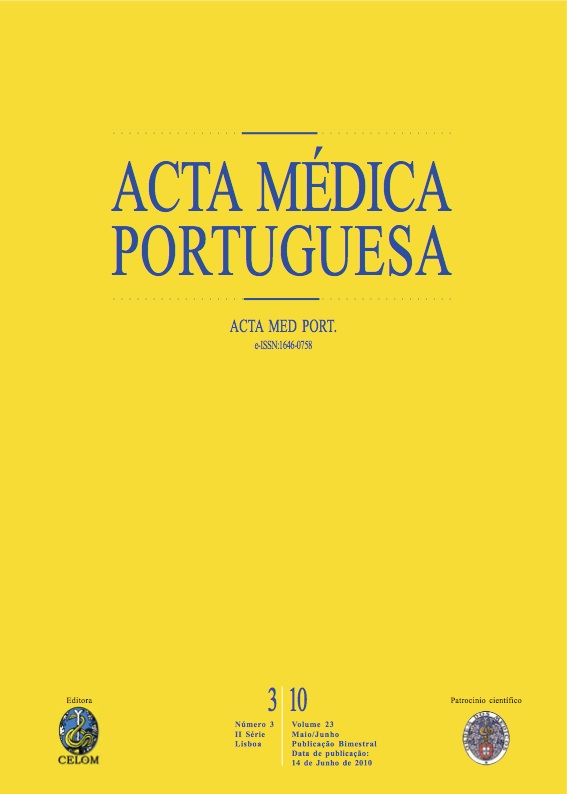Obesidade infantil e juvenil.
DOI:
https://doi.org/10.20344/amp.643Resumo
Childhood obesity, due to the exponential increase of this chronic disease, is now considered a XXI century epidemic disease. Portugal, the sixth European country where this disease is more prevalent, expends 3,5% of the annual health budget with this pathology.Characterization of the obese children followed in the pediatric outpatient clinic.A twelve year cohort study who comprehended 482 kids, analysing demographic variables; family and social backgrounds; personal backgrounds; habits; body mass index (BMI); comorbidities; blood tests; clinical intervention and follow-up.A positive family history with, at least, two obese elements was found in 64%, of the 246 boys (51%) and 236 girls (49%) analysed. We observed a 93% rate of eutocic delivery for an average birth weight of 3585 gr. These children were exclusively breastfeed for, at least, four months, in 38% of the cases. In our sample, we found an average of three meals per day, with an 81% rate of take-way. The absence of a regular physical activity plan was observed in 89% of the sample. Anthropometric evaluation and counselling about healthy habits were focused through all appointments. For a follow-up of 16 months (+/- 7 months), a 10% success rate was obtained, with an 1,22 BMI reduction. We verified a 20% dismissed rate, averagely occurring in the first 12 months (+/- 3 months).On the whole, the characterization of our sample seems to be according to the children obesity literature. Trough out follow-up, commitment to the interventional schedule was critical for life-style modification and desirable BMI achievement. Regular appointments and periodic evaluation of the results seems to be reliable strategies in the fight of this epidemic disease.Downloads
Downloads
Como Citar
Edição
Secção
Licença
Todos os artigos publicados na AMP são de acesso aberto e cumprem os requisitos das agências de financiamento ou instituições académicas. Relativamente à utilização por terceiros a AMP rege-se pelos termos da licença Creative Commons ‘Atribuição – Uso Não-Comercial – (CC-BY-NC)’.
É da responsabilidade do autor obter permissão para reproduzir figuras, tabelas, etc., de outras publicações. Após a aceitação de um artigo, os autores serão convidados a preencher uma “Declaração de Responsabilidade Autoral e Partilha de Direitos de Autor “(http://www.actamedicaportuguesa.com/info/AMP-NormasPublicacao.pdf) e a “Declaração de Potenciais Conflitos de Interesse” (http://www.icmje.org/conflicts-of-interest) do ICMJE. Será enviado um e-mail ao autor correspondente, confirmando a receção do manuscrito.
Após a publicação, os autores ficam autorizados a disponibilizar os seus artigos em repositórios das suas instituições de origem, desde que mencionem sempre onde foram publicados e de acordo com a licença Creative Commons









